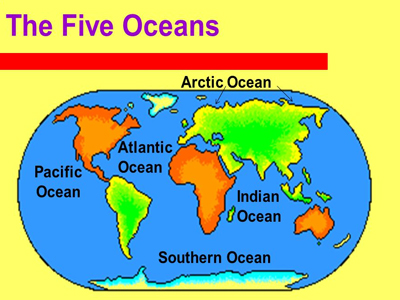The earth has finally got its fifth ocean. This means that the ocean was there before but it has now got the recognition of the fifth ocean. This recognition has been given by the National Geographic Society. The name of the fifth ocean is Southern Ocean. It is in Antarctica. Earlier there were four oceans on Earth… Atlantic, Pacific, Indian and Arctic Ocean.
The water in the fifth ocean i.e. Southern Ocean is very cold. Because there are only icy rocks, icebergs and glaciers here. On June 8, World Ocean Day, the National Geographic Society (NGS) recognized it as the fifth ocean. NGS’s official geographer Alex Tate says that for many years scientists were not recognizing the Southern Ocean, there was no international agreement on this. That’s why we were not able to officially place it in the category of ocean.
Alex Tate said that its biggest impact will be on the education sector. Students will get new information about Southern Ocean. It will also be recognized in all countries. It will be included in the geography and science books of different countries. Its specialty and weather will be taught about. Antarctica was also included in the map in 1915. But the NGS later bound the four oceans in boundaries. Which were named on the basis of the boundaries of the continents.
But on the contrary, the Southern Ocean will not be called by the name of any continent. Because it is surrounded by the Antarctic Circumpolar Current (ACC), which flows from west to east. Scientists said that the ACC was formed 34 million years ago, when Antarctica was separated from South America. This water keeps flowing at the bottom of the world.
In today’s time, the water of ACC flows in the oceans of the whole world. It surrounds the whole of Antarctica. It is called Drake Passage. This is where it is called the Scotia Sea. It is located between Cape Horn in South America and the Antarctic Peninsula. Therefore, the amount of water that flows in the ACC is from the Southern Ocean. The water here is colder and less salty than the water of the rest of the oceans.
The ACC acts as a global conveyor belt by pulling water from the Atlantic, Pacific and Indian Oceans. It reduces the heat of the earth. Because of this, cold water deposits carbon in the depths of the ocean. For this reason, thousands of marine species prefer to live in the waters of ACC. The oceans are named after the continents. These are divided into four parts.
The Southern Ocean was first discovered by the Spanish explorer Vasco Nunez de Balboa in the 16th century. Along with this, the international importance of this ocean was also told. Because through this maritime trade takes place internationally. searches take place. By the 19th century, many countries made maps of the seas by creating hydrographic authorities. The Southern Ocean was mentioned in the International Hydrographic Organization (IHO) in 1921.
The book Southern Ocean: Oceanographer’s Perspective, published in Ice Press 2015, states that until 1953, no country was ready to name it the ocean. Because no country was getting ready to give its justification. The US Board on Geographic Names began using the term officially in 1999. Scientists around the world used to call it the Southern Ocean.
The National Oceanic and Atmospheric Administration (NOAA) began using the term Southern Ocean in its report in 1999. After all, where did the word Ocean come from? It begins with the name Oceanus, the god of rivers in Greece. He is said to be the son of Uranus and Gaia. And he was the husband of Tethys, the creator of the water that gave life to the earth.
Earlier we were taught and told that there are seven seas. But now this thing is old. Because no one has the history of the origin of this word. The ancient history of the Greeks, Romans, Arabs, Hindus, Zoroastrians and China mentions different seas. Seven oceans are not normal in anyone. There are many such oceans in it which do not exist on earth. They are found only in mythological stories.

![Buddha Purnima 2025 [TKB INDIA]](https://topknowledgebox.com/iphaphoo/2025/05/12052025-150x150.jpg)
![YouTube is about to turn 20, the company announced many big features [TKB Tech]](https://topknowledgebox.com/iphaphoo/2025/04/28042025-150x150.jpg)
![Basant Panchami 2025: Know the correct date and auspicious time [TKB INDIA]](https://topknowledgebox.com/iphaphoo/2025/01/31012025-150x150.jpg)

![Amazing feature of WhatsApp, you will be able to reply without listening to the voice message[TKB Tech]](https://topknowledgebox.com/iphaphoo/2024/11/24112024-150x150.jpg)





More Stories
The color of rivers in Alaska turned orange, scientists are surprised by this unknown change [TKB Science]
Asia’s largest liquid mirror telescope installed in Nainital, will reveal the secrets of space [TKB Science]
Powerful earthquake in New Zealand, intensity was 7.0 on Richter scale [TKB Science]